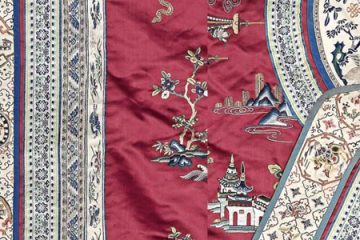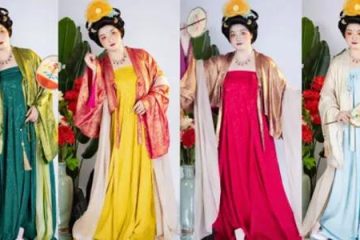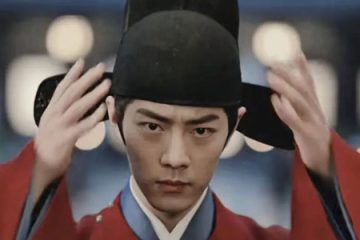What Is a Fun Fact About Hanfu?

Modern people can basically wear whatever they want, as long as they can afford it—but it wasn’t nearly that free in ancient times.
China has long been called the “Land of Elegant Attire and Ritual Propriety.” Clothing, as an outward expression of spiritual civilization, carried far deeper meanings, serving as a “status and class ID.”
So clothes weren’t just practical; they held the cultural context and mood of their time, with some details that might surprise us today.
Today, SilkDivas is sharing 6 fun facts about Chinese traditional clothing. After reading, head to the comments and tell us which one shocked you the most!
Ⅰ.Hanfu Is Older Than Ancient Rome
Hanfu’s history goes back more than 3,000 years, with roots in the Shang and Zhou dynasties (roughly 1600–256 BCE). That’s centuries before the Roman Empire was even a thing. Archaeologists have found silk garments in tombs from the Warring States period, showing the same cross-collar design that’s still used in modern Hanfu today.
In other words: the basic cut of Chinese traditional clothing has survived dynasties, wars, and fashion revolutions — and it’s still going strong.
Speaking of Rome, it’s worth mentioning its ties with China. According to The Book of Later Hanfrom China, the Romans were described as “tall, upright, and similar to the Chinese,” which is why they were called “Da Qin” (Great Qin). This shows Roman was viewed as a favorable faraway land in Chinese eyes.

Silk from the Silk Road—also a key material for Hanfu—was far softer and lighter than Roman linen. Back then, Rome’s hunger for Chinese silk bordered on obsession; at one point, silk was worth its weight in gold. If America had a gold rush, Rome definitely had a silk rush! It’s amazing to think how much good came from cooperation between these two great powers.
Ⅱ. Hanfu Is Not Just One Outfit
Some people imagine Hanfu as a single style of robe, but in reality, it’s an umbrella term for many garments across different dynasties.
Quju/曲裾: a long gown with a curved front, popular in the Han dynasty.
Zhiju/直裾: a straight-front robe that’s easier to sew (and walk in).
Beizi/褙子: a loose jacket, great for summer.
Mamianqun: the iconic “horse face skirt” with pleated panels, often worn in the Ming dynasty.
Each dynasty had its own flair — Tang dynasty robes were bold and colorful, while Song dynasty outfits were more delicate and refined.
Our website features a wide range of Hanfu, each with detailed descriptions to help you understand and pick a style that suits you.
Ⅲ. Sleeves Could Be Huge — and Functional
You often see in Chinese TV dramas those swordsman pulling all sorts of things out of their pockets—from folded letters and small scrolls to even snacks. It’s a really fun plot, and we covered it in an earlier blog post.
Sleeves designed for carrying small items generally had one of two features. Some had naturally narrow cuffs — like “pipa sleeves” or “drooping mustache sleeves” — that created a pouch-like shape. Others were cleverly tailored: even wide sleeves could have a hidden seam inside to form a sort of internal pocket. This not only prevented things from slipping out but also made it easier to carry light essentials discreetly.

But even if stashing stuff in sleeves is a hassle to get out, carrying a little bag works just fine. Those ancient Chinese bag designs are every bit as nice as today’s big-name brands. If you’re curious about things hidden in sleeves, click this link: Did Ancient Chinese Really Hide Things in Their Sleeves? for the full scoop.
Ⅳ. Men Wore Skirts Too
In Chinese traditional clothing, skirts (裳, chang) were not gender-exclusive. Both men and women wore them, especially in early dynasties. The design was considered elegant and formal for ceremonies. In fact, the shenyi (深衣) — a robe made by sewing an upper garment to a lower skirt — was a unisex outfit worn by officials, scholars, and nobles alike.

It’s only in more recent centuries that skirts became associated mainly with women in Chinese fashion.
Ⅴ. Hanfu Has Its Own Dress Code
In ancient China, clothing wasn’t just about looking good — it was a symbol of status and etiquette.
The imperial family often wore bright yellow, a color forbidden for commoners.
Civil and military officials had distinct embroidered patterns, like cranes or golden pheasant for civil officials and lions or qilin for military officers.


Seasonal fabrics mattered, too — silk gauze for summer, lined robes for winter.
Wearing the wrong style or color could be seen as disrespectful, or even illegal, in certain periods.
Examples like these are endless—flip through history books and you’ll find rules that could literally cost you your life.
Take the Western Zhou Dynasty, for instance: the Duke of Zhou established a whole set of clothing rituals, including a ban on using red or purple fabrics for undergarments. Messing with these dress codes was treated as serious as treason.
Jin Dynasty’s Jin Ling: Clothing Regulations spelled it out: only officials of rank 2 or higher could sport certain “forbidden items” like mountain deer or white badger ornaments, or pure gold/silver accessories. Common folks using them? That was illegal. And making or wearing “bizarre clothes”? Also punishable by law. So if you tried cosplay back in the Jin Dynasty, you’d better watch out! (;¬_¬)

The Tang Dynasty’s Tang Code even stipulated 100 blows with a rod for violating clothing rituals! Things got weirder in the Qing Dynasty: Great Qing Legal Code said anyone—officials included—using dragon or phoenix patterns on clothing got 100 blows and 3 years in prison. Even craftsmen making them got 100 blows, with the items confiscated. All these 100s—enough to make your legs shake, right? 😨
Ⅵ. It Influenced Other East Asian Clothing
The cross-collar and wide sleeves of Hanfu inspired traditional dress in Japan (kimono), Korea (hanbok), and Vietnam (áo dài). For example:
- Early Japanese kimonos were directly based on Tang dynasty court clothing.
- Korea’s jeogori jacket and chima skirt reflect Ming dynasty Hanfu tailoring.
- Vietnam’s áo giao lĩnh shares the overlapping collar style with Hanfu.
This cultural influence spread through diplomacy, migration, and trade along the Silk Road.
Summary
This blog is like a little roundup of our previous fun facts about Chinese traditional clothing. Let’s be real, pure facts can get boring—these little stories are way easier to dive into.
Which fact stuck with you the most? Feel free to chat about it in the comments!



0 Comments